The Legend of Heroes: Trails Through Daybreak finally leaves behind the Erebonia Empire of the last five games in the franchise to bring us to a new land: Calvard, arguably the strongest superpower left in the world of Zemuria. It resembles the modern world in many ways, right down to having its own version of Hollywood, and as you might imagine, that means it has a seedier side. Players control Van Arkride, a man who works as a private eye-slash-mercenary called a Spriggan. He's called upon to take on the jobs that are too morally gray for the heroic Bracer's guild. However, his peaceful life of moral ambiguity is shattered when a girl named Agnes shows up looking for his help to track down artifacts called Genesis. Before long, he is front and center in a dramatic race against time for the future of the country, not to mention dealing with a superpower called The Grendel that is awakening within Agnes.
Trails Through Daybreak's biggest success is how firmly and readily it breaks out of the ruts of the previous games in the franchise. It cuts way back on the forced losses, the sudden run-in saves, and the villains who never do anything bad or consequential. Almost every serious issue with the previous games has been taken into account. The cast is still large (and contains plenty of cameos), but it is no longer the overwhelming bloated excess that was Cold Steel IV and Reverie. Seeing characters from other games feels like a pleasant treat rather than further thinning out screen time. Even though the title ends on a "to be continued" note, it avoids feeling like you're playing part of a story, and it works well as a self-contained adventure — even if there are enough unresolved points to merit the already-announced sequel, Trails of Daybreak 2.
It helps that the cast is largely quite fun. The cast feels like a back-to-basics Trails party, and that generally works in their favor. Van may be my favorite protagonist in the series since Trails in the Sky's Estelle Bright. He has traces of Cold Steel's Rean, but he feels like a well-executed take on the archetype. His fellow party members and supporting cast are fun, and I look forward to seeing where they go in the sequel.
Trials Through Daybreak includes a morality system, and it's one of the better morality systems I've encountered in a game. Throughout the journey, Van has to make choices about how to approach things. Depending on what he does, he might gain points in either a Law, Gray or Chaos meter. These are all independent meters, and filling them up has a variety of rewards, including special items and plot changes. There are even route splits that change who you team up with. Certain characters are only willing to work with you if you've proven that you're willing to stand by their ideals.
What makes this work is that the morality system not only allows but encourages flexible thinking. Unlike a lot of games that do similar things, there's no reason for you to pick the one you want at the start of the game and only make those choices. Being willing to bend or break the law is presented as a good thing — as long as the moment is right — and by being morally flexible, I found myself being rewarded in a lot of small ways in terms of story and material benefits. Since each meter is separate (and sometimes they overlap, with certain actions giving points in multiple trees), there's also no real punishment for swapping around based on what feels right. Just by playing the game naturally, I got a rank of four (out of five) in all three trees, and the only thing that would've changed if I had specialized is that I would've unlocked the ability to craft a strong weapon that I could only use for about two-thirds of the final dungeon.
It also helps that Trails Through Daybreak is pretty good about making the choices feel valid rather than a problem. A lot of morality systems run into issues when you're either playing the patron saint of goodness or an absolute psychopath. For example, an early choice in a side-quest involves someone who was blackmailed into stealing from his office. You can play the goody two-shoes and encourage them to turn themselves in to the police and admit what happened, or you can go the morally gray path and point out that if they return the money, then nobody was harmed, and it isn't worth ruining their life over it. Even the "chaos" choices are entirely reasonable but trend in the slightly renegade direction, such as allowing a fight between monsters and a baddie that you're chasing to go on long enough to weaken both sides, instead of leaping into a 2v1 fight.
The core gameplay mechanics of the franchise are still in full force. As in every other game in the series, you're basically following plot events while occasionally being given free time to complete side-quests and spend time with your party members. Pretty much the only difference from how Cold Steel handled it is that you're collecting SP (Spriggan Points) instead of AP or BP. If you've played any game in the franchise, you know exactly how this goes.
Trails Through Daybreak makes some adjustments to the combat system from previous offerings. Perhaps the most noteworthy is that combat is now technically split between two different types: field and command. Field combat is functionally an evolution of the franchise's standard mechanic of "hit the enemy while they're moving around to start battle with an advantage." However, instead of those interactions being a hit to start a fight, you actually can engage in direct action combat. Your characters and the enemies will attack in real time. You can do a regular attack followed by a dodge, and each blow you land builds up to a "charge attack," which does more damage. Enough hits (especially charge attacks) can stun the enemy, and of course, if you reduce all their HP, they die as surely as if it were a turn-based battle. You can swap the character you're controlling, which is important because some characters have ranged attacks instead of melee attacks or have attacks that qualify as magical instead of physical, and this all impacts the damage that certain enemies take.
Command battles are something you can trigger at any time during a field battle. Once you trigger them, you enter into a more standard turn-based combat system. If you trigger it while an enemy on the field is stunned, then you enter battles with a special attack and a big advantage. On the other hand, if you don't avoid certain enemy attacks, it can force your party into a command battle at a disadvantage. While you're in a command battle, unless you're in a boss fight or have been forced into one by an enemy attack, you can choose to leave the battle and return to field combat any time during your character's turn.
For the most part, the combat system is pretty similar to that seen in Trails into Reverie but with some notable changes. For one thing, you can now freely move characters around the combat screen, but every character has a maximum distance they can move in a single turn. The ARCUS system has also been replaced with a new Xipha system, which functions somewhat similarly except there are no specific paired links. Instead, if two (or more) characters are standing near one another, they gain an attack bonus, either by enhancing magic and skills or by following up a standard attack with a regular attack.
New to the combat system is the boost system. Each character has a "Holo Core" they can equip, which is basically a customized combat Siri. In addition to having their own voices, each Holo Core also provides a special boost bonus depending on the core; it's rather similar to Master Quartz from Cold Steel and its sequels. However, unlike those games, the bonus isn't always in effect. Your party shares a boost gauge, and you can spend this gauge on a character's turn to boost them and gain the bonuses. You can actually spend two bars of this boost gauge to enhance the effects and unlock your character's ability to do an S-Craft super attack. As in previous games, S-Crafts are not only powerful attacks but can also be used to interrupt enemy actions. Performing an S-Craft increases the total amount of boost you can store for that fight. Boost also enhances the passive bonuses you get for equipping regular quartzes by increasing how often they trigger.
The combat system holds a lot of potential but genuinely feels more like a sidegrade than an upgrade. The Field combat is a neat idea but runs into the issue where the bulk of the time all you're going to be doing is smacking an enemy until it is stunned and then hopping into Command battle, which is practice makes it feel a lot like the previous "hit enemy from behind for a bonus" combat but slower. It doesn't help that the Field combat is incredibly slow, to the point where I kept the game's speed up function on the entire time because even running at enhanced speed it still was pretty slow.
Command combat is still fun but runs into an issue with the new boost/S-Craft mechanic. The franchise has always struggled with S-Crafts being incredibly powerful, and I can see how the new system was supposed to be a balance measure, but it hits the wrong mark. As part of the changes, S-Crafts now cost 100 CP and offer no bonus for going over 100 CP. If you have 200 CP, you can use the S-Craft twice in a row. Since the damage and benefits of an S-Craft far outweigh most other skills, this turns most combat into an exercise of spamming your S-Crafts over and over and ignoring the other potentially cooler moves. Boost is so easy to build up that there's little struggle in staying boosted. This doesn't ruin the game by any means, and it has been a problem throughout the franchise, but in Daybreak in particular, it feels quite extreme, especially for random encounters.
Trails Through Daybreak is a visual upgrade from the last few games, but to be honest, it's not a huge one. The character models are more detailed, and there's clearly a lot more confidence and flexibility in cut scene direction, but it's still a pretty low-budget game that relies on strong art design to carry it. As with the other games, a huge chunk of the presentation is carried by amazing music and excellent voice acting. Indeed, I feel like Daybreak is a step up in voice acting quality and overall translation from Reverie, and it really feels like they were firing with all cylinders on this one.
In terms of story and characters, The Legend of Heroes: Trails Through Daybreak is probably the strongest entry the franchise has had in a long while. It fixes a lot of long-running issues and manages to be self-contained and capable of standing on its own merits. The new combat system has potential but ends up feeling a tad one-note, and it's the only thing that isn't a full improvement over Reverie. On top of that, it's probably the best starting point for new players that doesn't require going back and starting with Trails in the Sky. If you're interested in the franchise, Trails Through Daybreak is a great place to start.
Score: 8.5/10
More articles about The Legend Of Heroes: Trails Through Daybreak



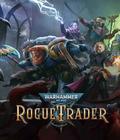
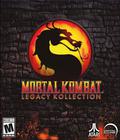
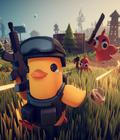
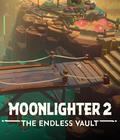
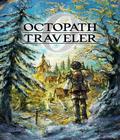
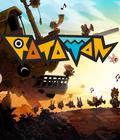
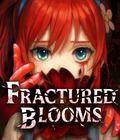

 Dive into the newest chapter of the Trails series with Kuro no Kiseki and experience the adventure with enhanced combat, updated visuals, and high-speed game mode!
Dive into the newest chapter of the Trails series with Kuro no Kiseki and experience the adventure with enhanced combat, updated visuals, and high-speed game mode!

































